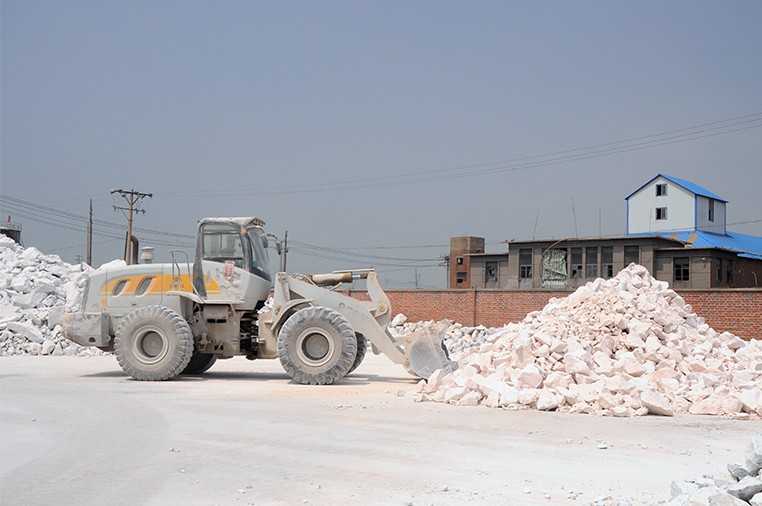According to the cold mixing process, the traditional magnesia-carbon brick made of synthetic tar binder hardens and obtains necessary strength during the tar damage process, thus forming isotropic glassy carbon. This kind of carbon does not show thermoplasticity, and the thermoplasticity can timely eliminate a large amount of stress in the process of lining baking or operation. Magnesia-carbon brick produced with asphalt binder has high high-temperature plasticity due to the formation of anisotropic graphitized coke structure in the process of asphalt carbonization.
Therefore, the crack resistance of brick made of asphalt is higher than that of brick made of asphalt. However, one of the disadvantages of asphalt bonded brick is that it needs to use hot mixing during production and requires a brick mold preheating device. In this paper, the method of manufacturing magnesia-carbon brick by cold mixing process is described. The bricks made have a lower elastic modulus, which makes them play a role in stress relief during operation and use. The common coal tar pitch is harmful to environmental protection because of the existence of benzo. A special binding agent with low content of benzo is selected to meet the requirements of environmental protection.
1 Introduction
Magnesia-carbon brick was developed 35 years ago, and now it is widely used to build steel furnaces. Magnesia-carbon bricks are also widely used in other kilns, such as double-hearth steelmaking furnace, Rll type circulating vacuum treatment device, etc. Traditionally, this kind of brick is manufactured by using synthetic tar binder according to the cold mixing process, and by using asphalt binder according to the hot mixing process. Both binders have their own advantages and disadvantages. The main advantage of magnesia-carbon brick produced with tar binder is that it is possible to produce it with cold mixing process. Unlike asphalt binder, it does not require heavy equipment and manual labor. On the other hand, bricks produced with asphalt binder have good thermoplasticity. They have high crack resistance because they can absorb the stress generated during operation. The main content of this research work is to make comprehensive use of the advantages of the two systems and develop a cold mixing process.

2 Experiment
2.1 Raw materials
As raw materials, fused magnesia with a purity of 97.5%, FC grade flake graphite with a purity of 95% and standard coal tar pitch are used. Because of the presence of polyaromatic hydrocarbons, such as benzopyridine, it is harmful to the environment. The content of benzopyridine in coal tar pitch is between 10000 and 15000mg · kg-1, while the international standard stipulates that the content of benzopyridine should be 50mg · kg-1 (see German standard TGRS551). In order to comply with this strict requirement, a special binder with benzopyrazole content of 300 mg · kg-1 was selected. The data on viscosity performance obtained from the supplier shows that the dynamic viscosity of this binder is between soluble phenolic resin and linear phenolic resin, which is completely acceptable for production.
2.2 Preparation of molding mixture and sample molding
In order to make tar-bonded bricks, we usually use 2% diluted tar. In the process of the experiment, dilute asphalt was gradually used to replace the dilute tar, and the changes in the formability and performance of the bricks were observed. In order to conduct a full comparative study, five molding mixtures were manufactured.
2.3 Test of sample
Conduct the test in our laboratory. Select 3 bricks randomly from each ingredient, and calculate the average index in order to reduce the error.
The effect of dehydration (water absorption) agent is well known. As such additive, sulfur powder is selected. Experiments were carried out with different amounts of sulfur. It was found that the strength increased by 20% after adding sulfur, but the open porosity and bulk density of the material after carbonization did not improve. However, when 10% dehydrating agent and thin asphalt are added, the two indicators of compressive strength after molding and carbonization treatment are improved. When the addition of sulfur is further increased, the strength is not improved.
3 Industrial test
In order to conduct industrial test, the ingredient CZ was selected and made into bricks. The bricks made of the above ingredients are used to build the lining of three steel ladle. The service life of the lining is 109 times, 103 times and 105 times (the average is 109 times), and the service life of the traditional magnesia-carbon brick combined with tar is 103 times.
4 Conclusion
The brick can achieve high performance by selecting appropriate binder. The binder used meets the requirements of environmental protection and safety (see standard TGRS551). Obviously, the improvement of the lining life is beneficial to the user. In terms of cost, the special asphalt binder used is similar to tar.